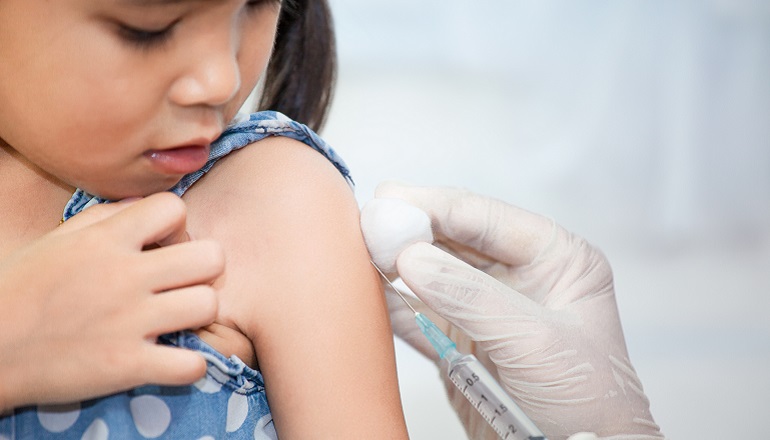Q: Should my child be tested for tuberculosis? Will she test positive whether or not she has TB, since she has had the TB vaccine?
A: Although many of us think of tuberculosis as a disease of the past, it is still very much with us. While TB has been on a steady decline in the U.S., children living in dense urban areas, or those living in proximity to prisoners and homeless persons, may be exposed. TB is one of the top ten causes of death worldwide. Orphanage workers may have active infections, and may spread it to the children in their care through coughing and sneezing. According to Dana Johnson, M.D., of the University of Minnesota’s International Adoption Clinic, tuberculosis is the most common infectious disease in international adoption, afflicting up to 20% of children in certain countries.
Although TB is a chronic infection that can cause permanent damage in almost any part of the body, most children infected with the TB bacteria do not develop the active disease immediately. Instead, in most cases, the body’s immune system attacks the bacteria in the lungs and prevents the development of active TB. While an infected child may appear completely healthy (and is not contagious), the TB infection may remain dormant. Without TB tests to identify the infection, and treatment to eradicate it from the body, TB can be reactivated at any time.
In contrast to those with the dormant infection, children with active TB experience fever, fatigue, a persistent cough, weight loss, and poor growth, and can become critically ill. They can also spread TB to others. Active TB can be successfully treated, usually with a combination of drugs, but it is far easier to treat TB before the active disease develops.
Who should be tested?
“Any child or adult who is becoming a permanent U.S. resident needs an overseas medical exam, which includes testing for TB,” according to CDC guidelines. The exam must be conducted by a qualified panel physician, and if positive, must complete medical treatment before coming to the United States. The U.S. Citizenship and Immigration Services (USCIS) of the Department of Homeland Security may grant a waiver in special situations when a person may benefit from receiving TB treatment in the U.S. Adoptive parents and adoption agency workers should be tested six months after they travel to an at-risk country. In addition, children in the U.S. who are at high risk of exposure should be routinely screened for TB throughout childhood.
The recommended screening for tuberculosis exposure varies based on: age of child, if the child has a known HIV infection, and if the child is showing signs or symptoms of TB. The most commonly used is a skin test known as the tuberculin skin test (TST). PPD (purified protein derivative) is the solution used to administer the test. In the TST, a tiny, inactive part of the tuberculosis bacterium is injected under the skin in the forearm, resulting in swelling and firmness. For a child in foster care or one who was born abroad, a measurement of 10 millimeters (mm) is considered a sign of tuberculosis exposure and called a “positive PPD,” regardless of whether or not he was previously vaccinated for TB. To obtain accurate results, it’s important that a health care professional check the tested skin area 48 to 72 hours after the PPD injection.
If your child’s TST test is positive, i.e., greater than 10 mm, the next step is a chest x-ray to rule out active tuberculosis in the lungs. If the chest x-ray shows abnormalities, additional tests are required. Even if there’s no evidence of active disease in the lungs, children with positive PPD results should begin treatment with isoniazid, an antibiotic taken daily for nine months. Isoniazid prevents the TB germ, dormant in the body but not yet causing active disease, from becoming active. It’s important to continue treatment for the entire nine months to eradicate all TB bacteria. Bacteria that remain in the body when treatment is stopped prematurely can become resistant to standard drugs and are harder to treat.
[Ask the Adoption Medicine Expert: Choosing a Doctor]
Although isoniazid can cause liver problems in adults, it is considered safe in healthy children. Isoniazid may interact with other medications, so it’s important to tell your doctor about any prescription and over-the-counter drugs, including herbal remedies, that your child is taking. A child with a positive TST test and a negative chest x-ray is not contagious to others, and can continue to attend school or day care.
Testing and the TB vaccine
Because TB is a significant problem throughout the world, many children receive the BCG (bacille Calmette-Guerin) vaccine. The BCG vaccine, rarely used in the U.S., is usually injected into the shoulder, resulting in a scar similar to that of the smallpox vaccine. Although vaccination helps prevent the TB bacteria from spreading to other parts of the body and helps to protect babies, who are at high risk for serious complications of TB, it doesn’t provide long-term protection. Children who receive the vaccination can still become infected.
There is considerable misinformation among adoptive parents and medical professionals as to whether children who have received the BCG vaccine prior to arriving in the U.S. may be accurately tested for exposure to TB. According to recent studies, although a child who has received the BCG vaccine may show a reaction to the TST test, the TST test will result in less swelling (under 10 mm) than in a child who has been exposed to the actual disease. In this casea child with a prior BCG vaccine and a response to TST but swelling of less than 10 mm—the result is not considered positive for TB. However, a TST test that causes 10 mm or more of swelling is considered an accurate indication of TB infection, whether or not the child received the BCG vaccine, and the child should have a chest x-ray and begin antibiotic treatment.
[Instant eBook: Raising Adopted Children]
TB infection can be a serious health risk if it remains undetected. For more information about TB testing, refer your child’s physician to the Red Book, published by the American Academy of Pediatrics Committee on Infectious Diseases. This book, updated every three years, includes the latest recommendations for the evaluation and treatment of tuberculosis, as well as the testing of children previously vaccinated for TB.



